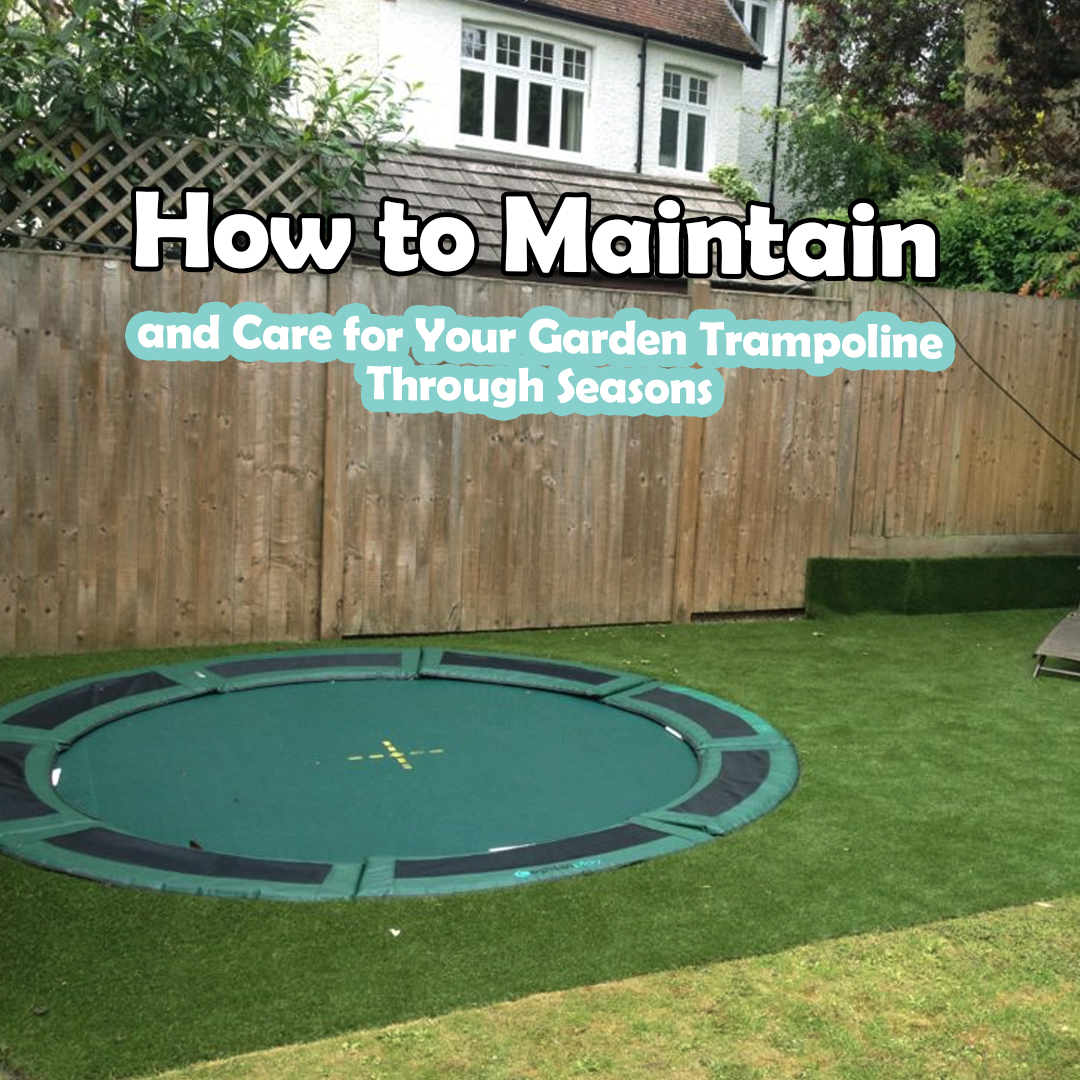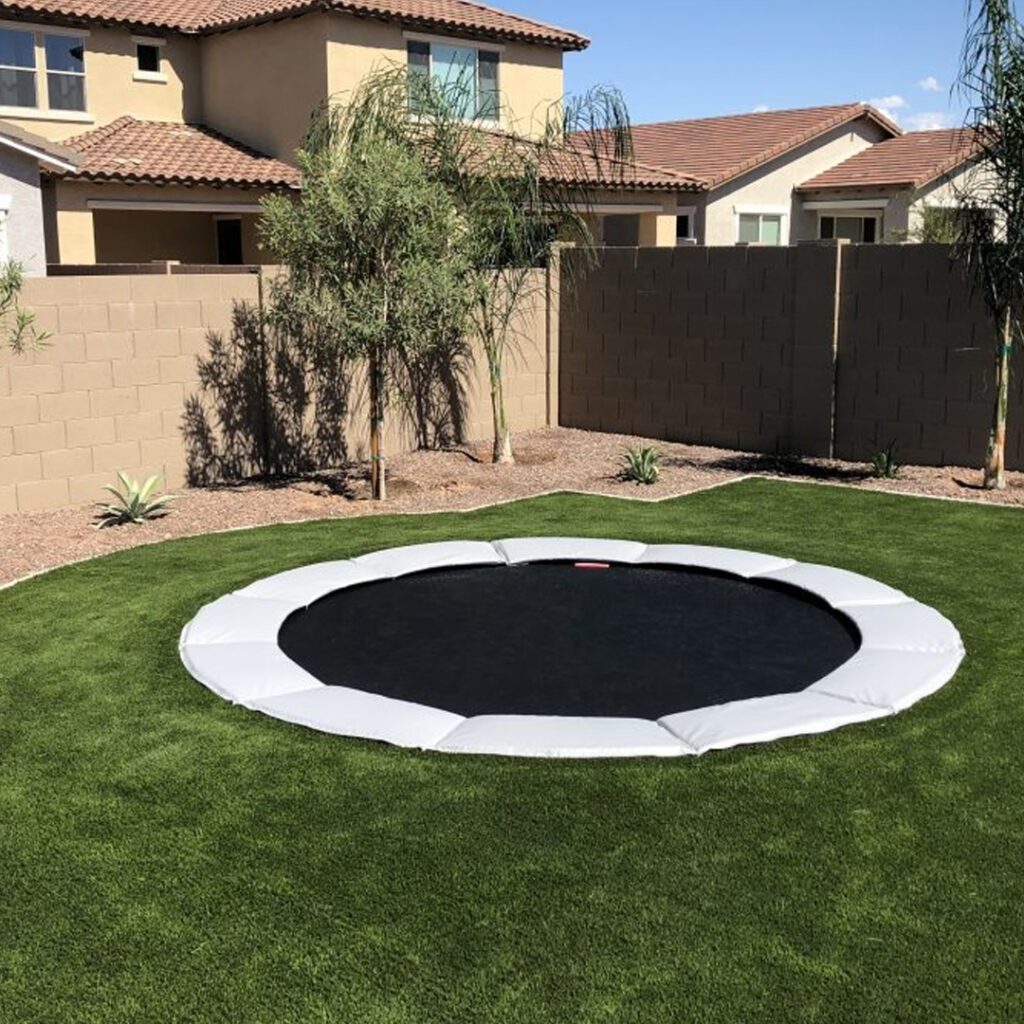
As the seasons change, so do the maintenance needs of your garden trampoline. Throughout the year, it’s vital to follow safety guidelines to minimise the risk of injuries while jumping. These include proper supervision, installing safety padding and nets, and regular equipment inspections.
Summer brings increased usage and exposure to sunlight, requiring frequent checks for damage and debris removal. In autumn, securing the trampoline against strong winds and cleaning the pad are top priorities. Finally, winter calls for protective measures against snow and freezing temperatures, including storage indoors if possible.
In this blog, you’ll discover comprehensive guidance on caring for your garden trampoline throughout every season of the year.
Components of Your Trampoline
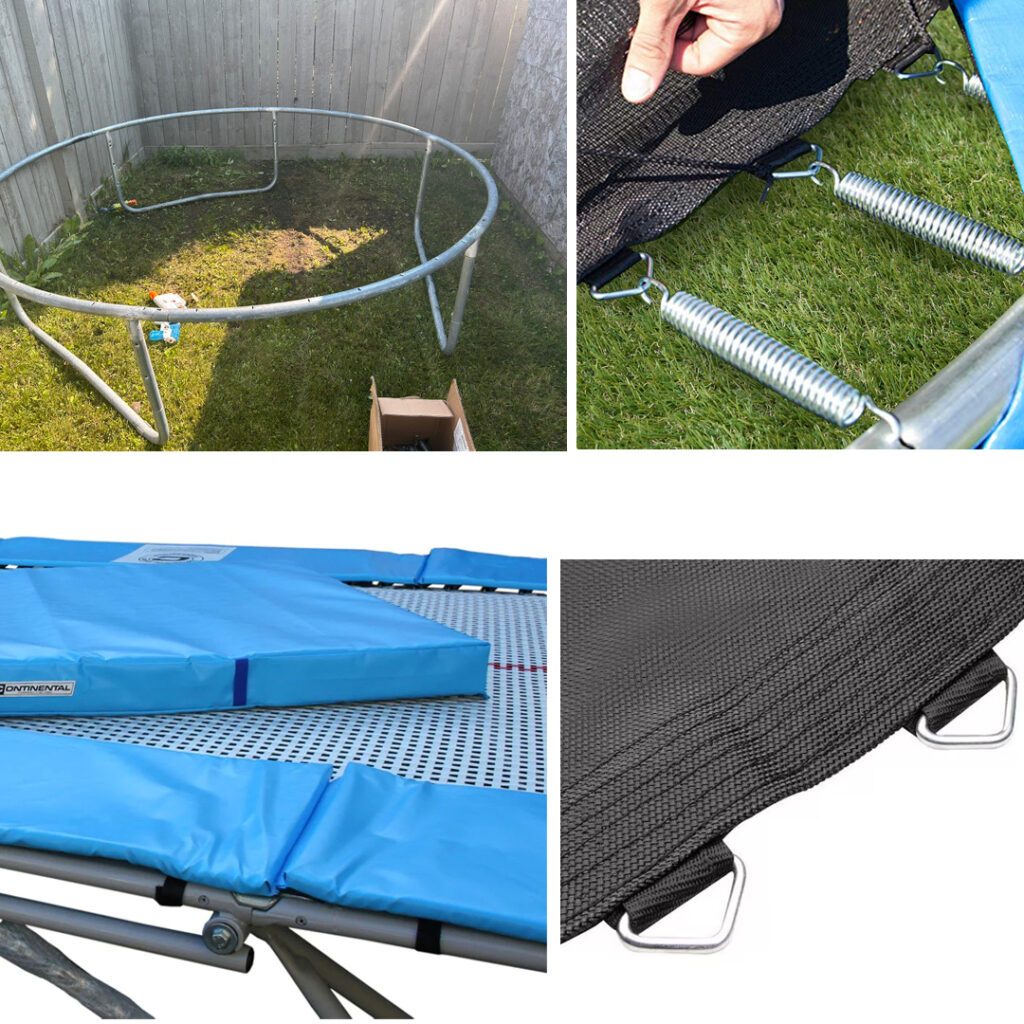
Frame
The frame is the structural base that holds all the other parts together. Made of galvanised steel, the frame should be sturdy and rust-resistant. As the foundation, the frame takes the most stress from jumps and flips, so it’s critical for safety. Inspect the frame regularly for any signs of damage or instability and repair or replace as needed.
Trampoline Bed
The trampoline bed, or jumping surface, attaches to the frame using multiple springs. Quality mats are made of heavy-duty polypropylene mesh that is UV-resistant and weatherproof. The mat should have a non-slip surface so jumpers can land safely. Always check that the mat is securely attached to the frame before jumping.
Springs
The springs provide the bounce in your trampoline. Made of galvanised steel, the springs attach the mat to the frame. Look for trampolines with at least 72 springs for optimal bounce and safety. Springs do weaken over time, so replace any damaged or rusty springs to prevent injury.
Safety Pad
The safety pad covers the springs and frame to prevent injuries from accidental contact. Made of waterproof vinyl or polypropylene, the pad should fully encircle the trampoline. Secure the safety pad to the frame to ensure it does not shift during use. Replace worn or torn pads immediately.
Safety Enclosure
For added safety, consider installing a safety enclosure that fully encloses the trampoline. The net should be made of a durable, weather-resistant mesh and securely attach to poles that surround the trampoline. The net prevents jumpers from falling off the trampoline, as well as preventing objects from flying into the jumping area. Install the net according to the manufacturer’s instructions to ensure maximum safety.
Inspecting and properly maintaining all parts of your trampoline, especially the critical safety components, is key to keeping jumpers protected while bouncing the day away. Stay on top of repairs and replacements needed to enjoy your trampoline for years to come.
Seasonal Maintenance Guide:
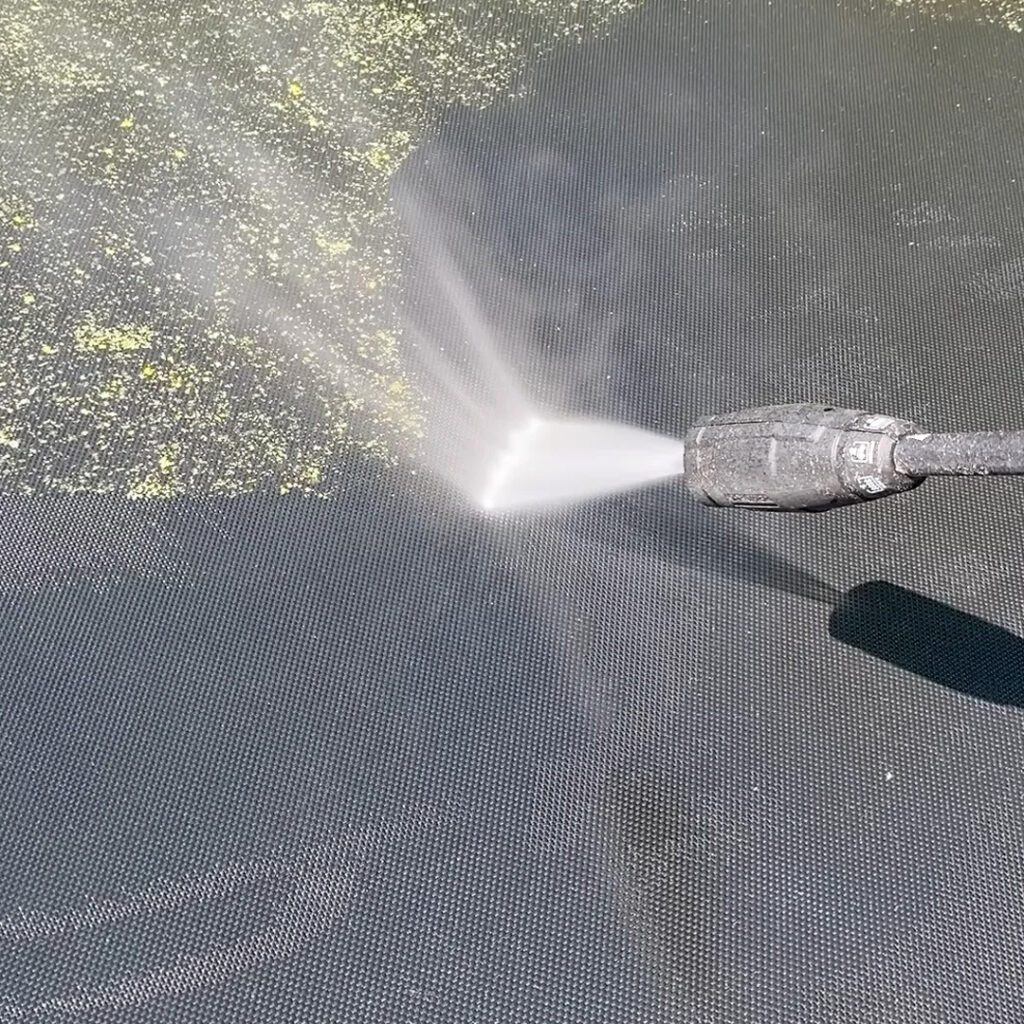
Inspecting Your Trampoline
In the spring, once the weather starts getting warmer, it’s time to get your trampoline ready for the season. Remove any winter covers you’ve used to protect it from the elements. Give the entire trampoline a thorough inspection, checking for any signs of damage or wear and tear. Tighten any loose bolts or screws. Springs should also be checked to make sure they’re not rusty or losing tension. If you notice any issues, it’s best to replace damaged parts to ensure safety.
Cleaning
A good cleaning will remove built-up dirt and debris from the winter months. Use a hose to rinse down the mat and frame. For stuck-on messes, create a solution of warm water and dish soap. Scrub any dirty areas and rinse well with water. Make sure all parts have dried completely before using the trampoline or reattaching the springs.
Spring Tension
Well-tensioned springs are important for the performance and safety especially for large 14ft trampoline. As the weather warms up, the material of the springs and mat will expand slightly. Check that the springs still have good tension by pushing down on the edge of the mat. It should still feel taut and bouncy. If it feels loose or saggy, it’s time to tighten the springs using a trampoline spring tool. Tighten each spring by a half-turn at a time until the proper tension is reached.
Maintaining your trampoline properly in the spring will ensure maximum enjoyment and safety all season long. Regular inspections, cleaning, and adjustments are key to keeping your trampoline in tip-top shape year after year. Stay on top of these simple seasonal maintenance tasks and your trampoline will provide hours of entertainment for many summers to come.
Summer:
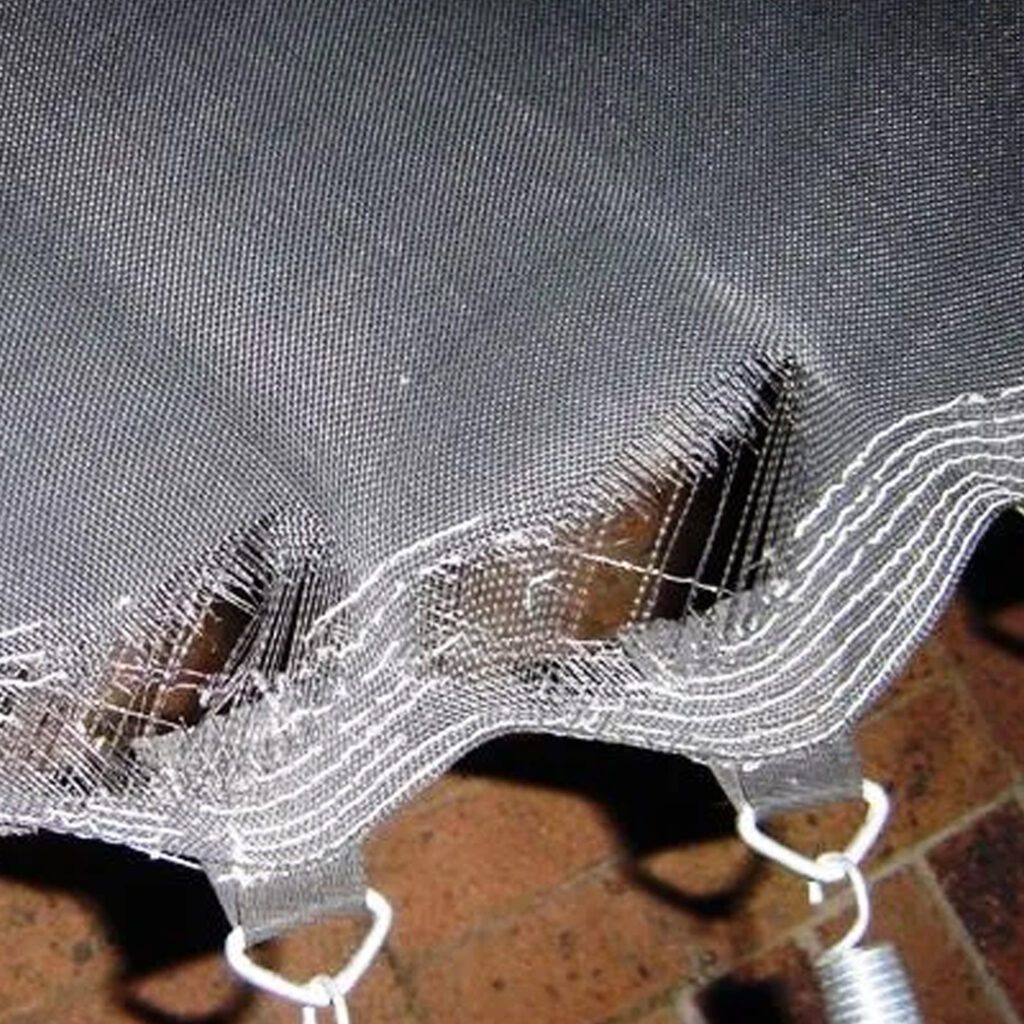
Check for Damage
During the hot summer months, the sun’s UV rays and heat can cause damage to your trampoline. Inspect the mat, springs, pads and net for any signs of wear or tear. Look for faded, cracked or torn parts and replace them as needed. It’s best to do checks once a week or every other week. Small rips or holes can quickly become bigger problems, so repair or replace damaged parts right away.
Remove Debris
With increased use during summer, debris like leaves, dirt and trash can collect on and around your trampoline. Clean the bed, springs and pads with a soft brush to remove any built-up debris. Rake or sweep under and around the trampoline frame. Built-up debris can be a slipping hazard, and trapped moisture may lead to rust. Perform regular cleaning to keep your trampoline in good working order.
Check Safety Pads and Net
The safety pads covering the springs and the net surrounding the trampoline take a lot of wear during summer. Inspect them closely for any tears, holes or damage. Exposed springs or an open net pose risks of injury. Repair or replace damaged pads and netting immediately. It’s also a good idea to check that all pad and net attachments are securely fastened to ensure maximum safety.
Monitor Spring Tension
The tension of the metal springs is what gives a trampoline its bounce. Over time and with heavy use, spring tension can loosen, affecting performance and safety. Check each spring and tighten any that feel loose using a spring tool. Most trampoline manufacturers recommend tightening springs so they compress to about an inch when pressed down firmly. Tight, evenly-tensioned springs will provide an optimal, balanced bounce.
Regular monitoring and maintenance will keep your trampoline in top shape all summer long. Be proactive and deal with any issues right away to ensure maximum safety, performance and fun for all jumpers!
Autumn/Fall:

Secure Your Trampoline
As the autumn winds start to pick up, it’s important to ensure your trampoline is securely anchored to the ground using tie down anchors. Strong gusts can easily lift an unsecured trampoline, damaging it or causing injury. Use galvanised straps or steel anchors screwed deep into the ground around the legs of the trampoline. You should inspect the straps or anchors regularly for wear and tear and replace them every few years.
Clean Your Trampoline Pad
With falling leaves and increased rainfall, autumn brings damp and mouldy conditions. Give your trampoline pad a good clean before storing it for the winter. Use a stiff brush to remove dirt and debris caught in the padding. Then spray it down with a disinfectant or mould remover and let it air dry completely. This will prevent the growth of mould and mildew, keeping your trampoline pad in good condition.
Cover Your Trampoline
Once you’ve cleaned and secured your trampoline, cover it to protect it from harsh weather during autumn and winter. A weather-resistant trampoline cover, with straps or ropes to keep it securely in place, will shield your trampoline from heavy rain, snow and ice. Tie the cover down tightly, with additional straps around the legs of the trampoline to prevent wind getting underneath. Ensure all parts of the trampoline, including springs and padding, are fully covered. A good quality cover can help extend the lifespan of your trampoline.
Winter:
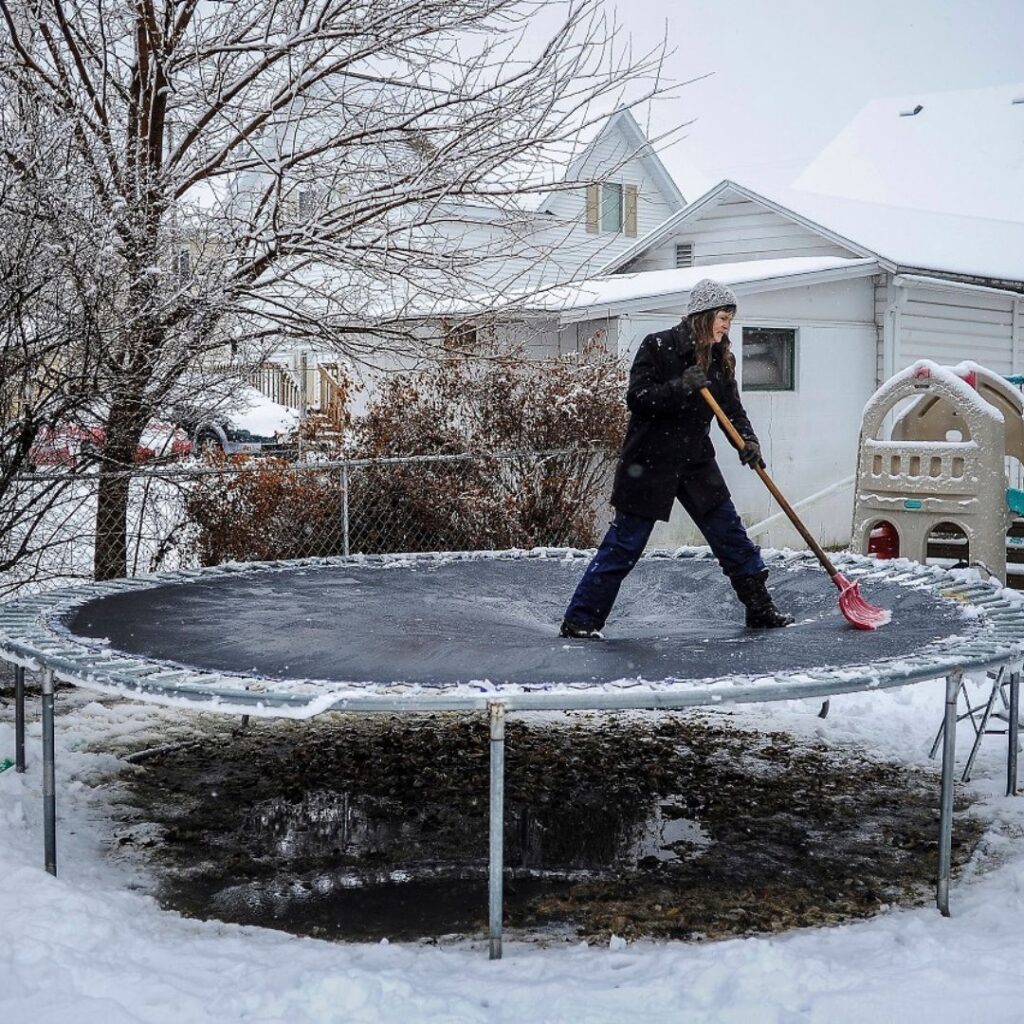
Store the trampoline indoors if possible. If not, secure it against harsh weather conditions. Remove snow accumulation regularly. Inspect for any damage caused by freezing temperatures.
Remove Snow Build-Up
Allowing snow to accumulate on the trampoline, even with a tarp, can lead to dents, tears and broken springs from the extra weight. After snowstorms, head outside with a snow rake or push broom and gently clear the surface. Be very careful walking on the tarp, as it can be slippery. Remove snow from the edges and around the springs as well.
Store Indoors or Protect Outside
If you have space in a garage or shed, storing your trampoline inside during winter is the best way to protect it. If keeping it outside is your only option, take steps to shield it from damage. Wrap the padding, springs and mat in weather-resistant covers or tarps and secure them in place. Weigh down the tarp or use straps to prevent wind damage. Clear snow off the tarp regularly so the weight doesn’t damage the trampoline underneath.
Inspect for Frost Damage
Freezing temperatures can cause small tears or cracks in the padding, mat and springs that may not be noticeable until warmer weather. Once temperatures start rising above freezing, thoroughly inspect your trampoline for any signs of damage like small rips, dents or sagging padding. Patch or replace any damaged parts right away to prevent injuries when the trampoline is back in use. It’s a good idea to do a final inspection just before removing the tarp or bringing the trampoline out of storage for the season.
Conclusion
These were the few handy tips to keep your garden trampoline in tip-top shape all year round. Stay on top of repairs, clean your trampoline timely, and store it properly when not in use. Maintaining your trampoline does take some effort but the smiles and giggles it brings are so worth it. Now get out there and jump to your heart’s content, knowing your trusty trampoline is ready for action rain or shine!

